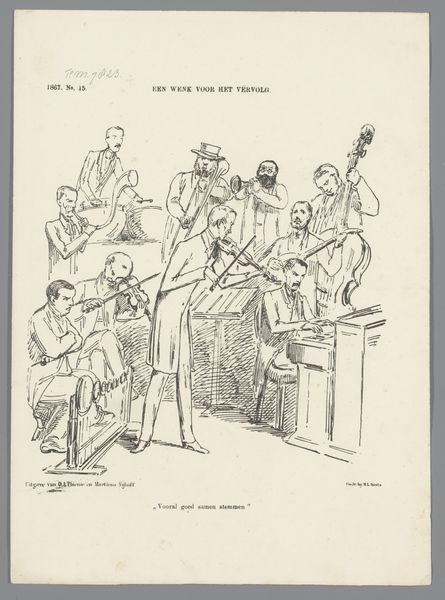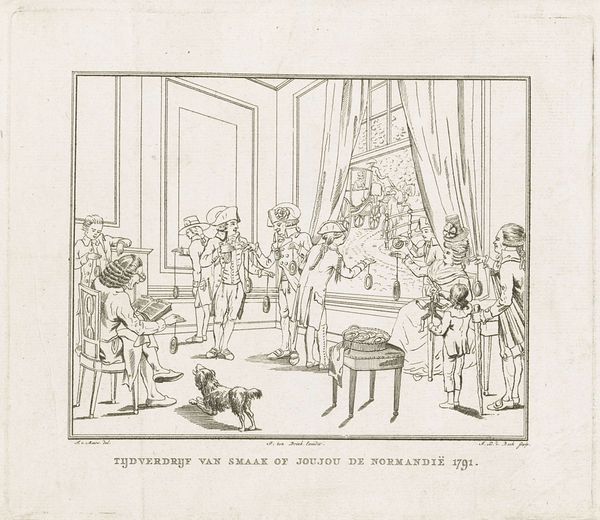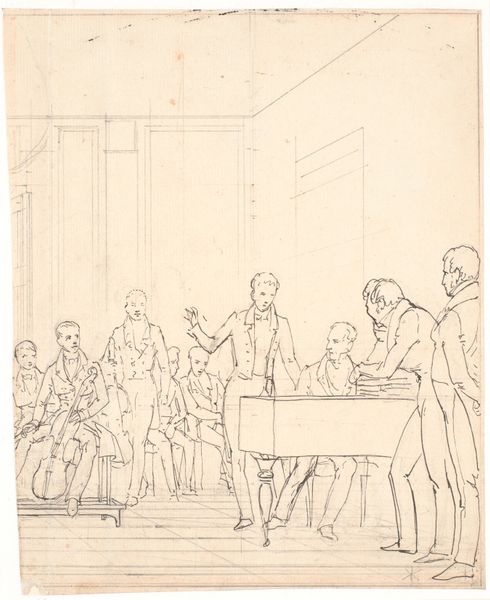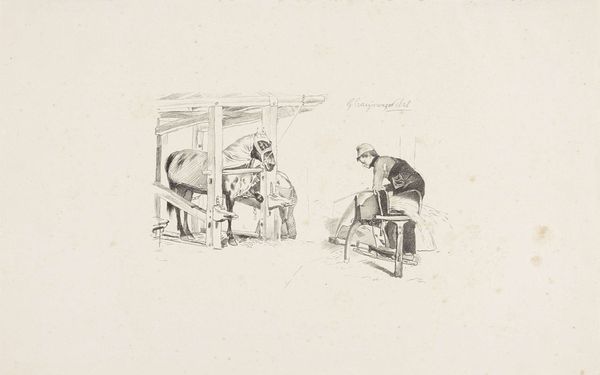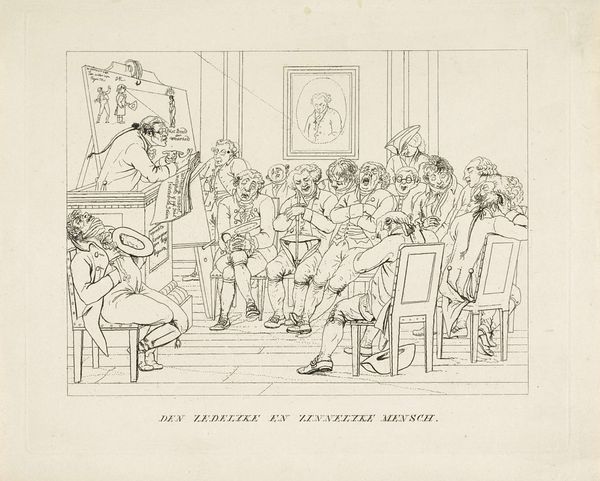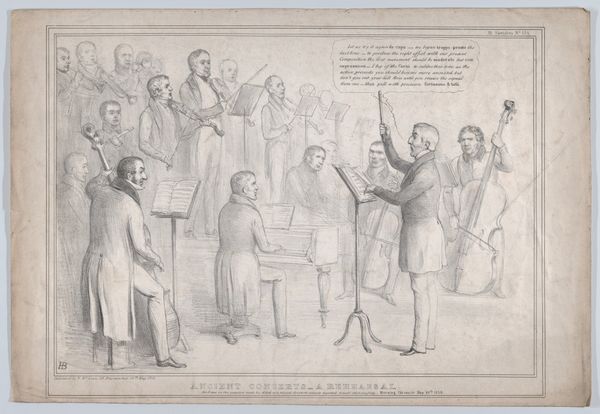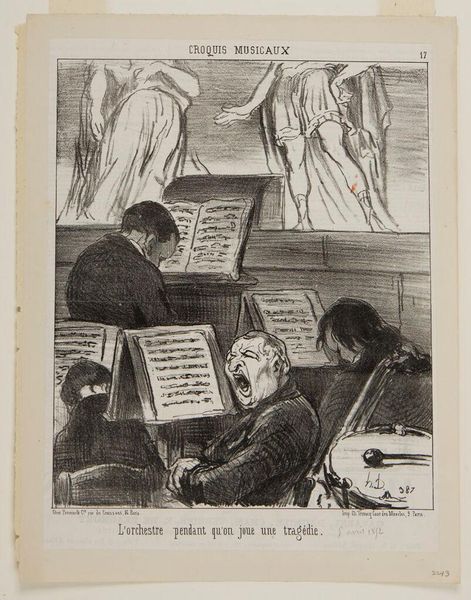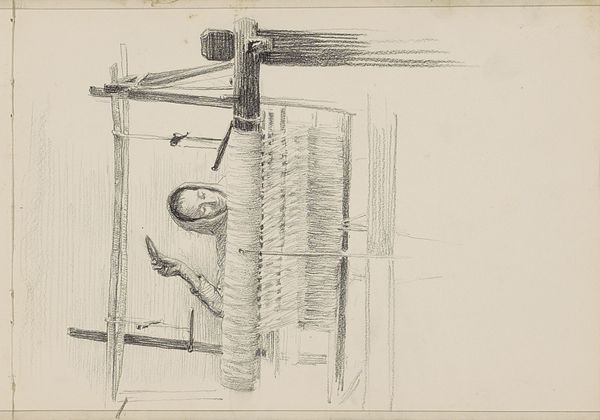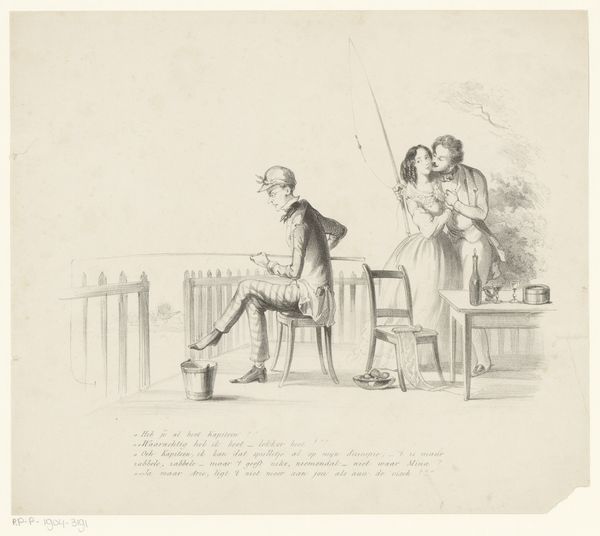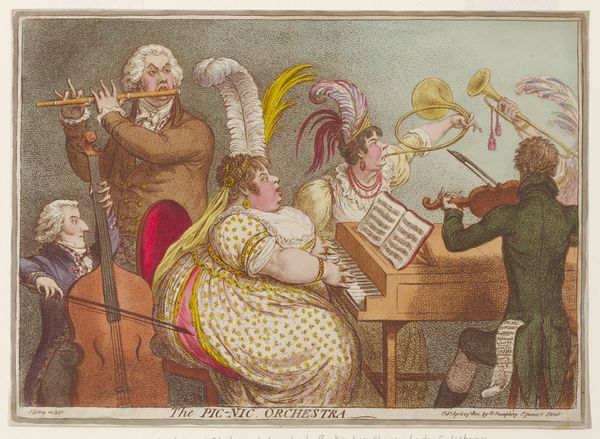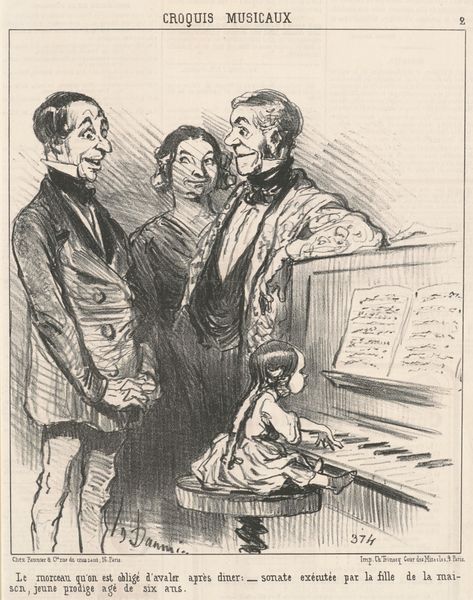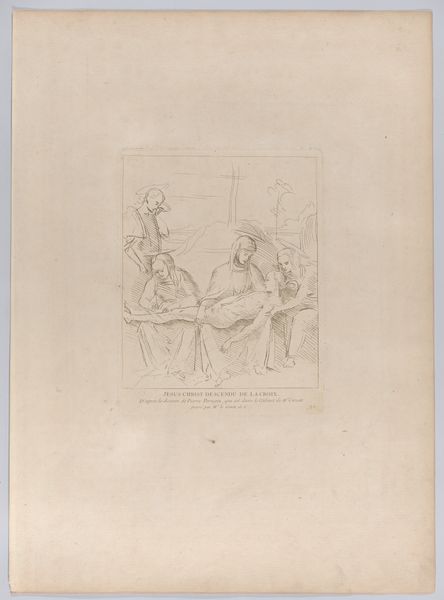
graphic-art, print, ink
#
graphic-art
# print
#
caricature
#
old engraving style
#
figuration
#
ink
#
ink colored
#
line
#
genre-painting
#
history-painting
Dimensions: height 215 mm, width 275 mm
Copyright: Rijks Museum: Open Domain
Curator: Here we have a print titled "Spotprent op de nieuwe ministers," or "Cartoon of the new ministers," created in 1862 by Johan Michaël Schmidt Crans. The medium appears to be ink on paper, showcasing a wonderful example of graphic art. What are your initial impressions? Editor: My first thought is the almost chaotic energy, though organized into the visual structure of an orchestra. The cross-hatching of the ink work really heightens that feeling. And the exaggerated features of the figures are immediately striking. Curator: Absolutely. This piece speaks volumes about the role of political satire in mid-19th century Dutch society. Caricatures like these served as a form of social commentary. This print comments on the workings of power, portraying ministers as out-of-tune orchestra members. We can consider who this work spoke to, likely middle-class literate citizens engaged in political discourse, further defining it within public life. Editor: And looking at the construction, the stark black ink creates sharp outlines and contrasts with the paper, making the image pop. It really utilizes the capabilities of printmaking technology. The distribution of these prints really underscores the development of printing, making this political commentary accessible and potentially fostering public debate. What can you tell us about Crans himself? Curator: Crans was a well-known caricaturist, so this style was consistent with his artistic approach. His pieces regularly targeted politicians and key social figures of his time, influencing public opinion through visual representation. Editor: It’s fascinating how an artwork like this uses familiar imagery—an orchestra—to comment on political dynamics. It almost seems that the chaotic arrangement of ministers highlights their perceived incompetence. Curator: Precisely. And the method of distribution plays a crucial role; it’s no longer about elite patronage but rather mass consumption. Prints such as these challenge notions of "high art" by serving political and social purposes, integrating art directly into daily life. Editor: I think the image successfully melds social critique and material awareness, and hopefully encourages a deeper analysis into the labor involved in its original distribution and printmaking process. It makes us aware of how political narratives get produced and consumed. Curator: It's a powerful example of how visual art functioned as a vital component of political discourse. Thanks for offering those observations.
Comments
No comments
Be the first to comment and join the conversation on the ultimate creative platform.
